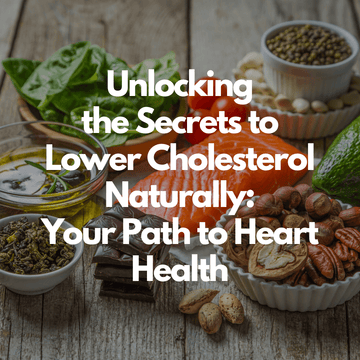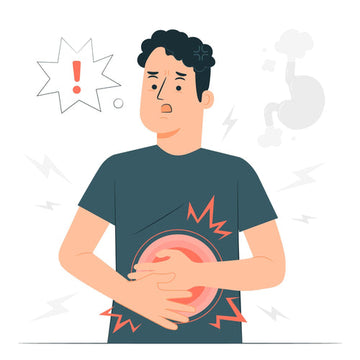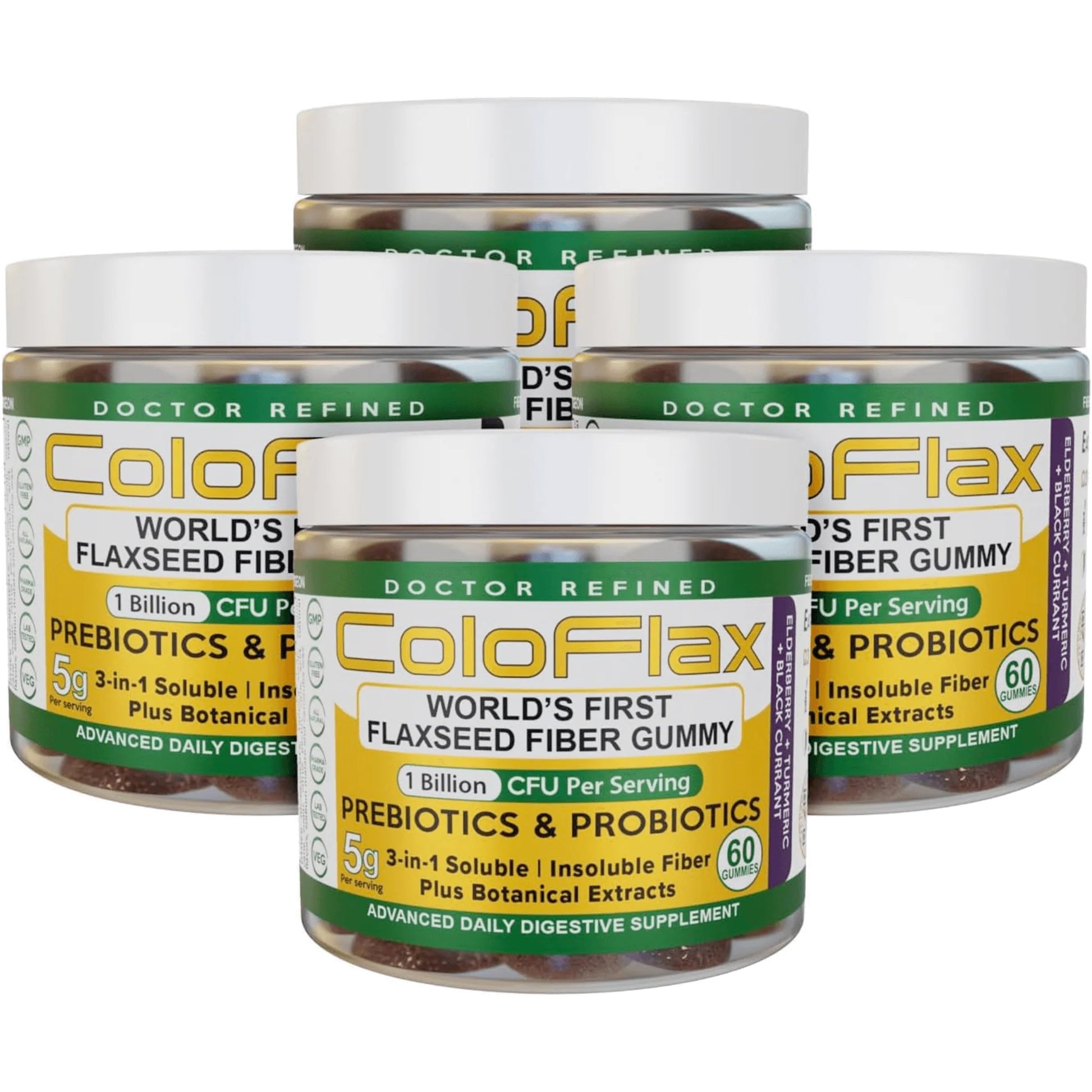Low-density lipoprotein (LDL), also known as “bad” cholesterol, can increase your risk of strokes and heart attacks. On the flip side, high-density lipoprotein (HDL), or “good” cholesterol, can support heart health and protect against some of the issues that LDL cholesterol causes.(1)
To protect your heart and maintain healthy arteries, you need to keep these two in balance, and for many Americans, that means reducing LDL cholesterol and increasing HDL.
There are numerous natural ways of keeping your cholesterol in balance.
Eat Healthy Fats
The easiest way to lower cholesterol is to adopt a low-fat diet. But that can also reduce HDL cholesterol and may increase the risk of other issues.(2)
A more effective solution, therefore, is to monitor your fat intake, keep it within reasonable levels, and switch saturated fats for monounsaturated and polyunsaturated fats.
In one 8-week study, 115 participants replaced saturated fat with polyunsaturated fats. Blood was taken before and after the study and despite running for just 8 weeks, researchers recorded a 10% reduction in levels of LDL cholesterol.
So, ditch the lard, reduce the butter, cut back on the cream, and use more olive oil and canola oil. These healthy fats can also be found in fatty fish (salmon, trout, mackerel), avocados, and seeds.
They are still high in calories so you’ll have to keep a watchful eye on your overall calorie intake, but making this simple change could have a massive impact on your cholesterol levels and cardiovascular health.
Stay Away from Trans Fats
Trans fats are a type of unsaturated fat created via a process known as hydrogenation. In simple terms, hydrogen is added to vegetable oil to convert liquid fat into solid fat and make it more shelf stable.
Food companies love them, as they are a cheap and long-lasting substitute for butter and other fats. But your body isn’t as keen.
Trans fats provide a veritable one-two knockout blow for your cholesterol levels by increasing LDL (the “bad” cholesterol) and decreasing HDL (the good stuff). The CDC warns that consumption of trans fatty acids “can increase the risk of coronary heart disease (CHD) morbidity and mortality and all-cause mortality.”(3)
The World Health Organization has called for the total eradication of trans fats from the global food supply and many governments have taken steps toward doing that. However, they are still widely used and can be found in a host of frozen foods, processed foods, baked goods, and fried foods.
Everything from shortening and pre-prepared baked goods to frozen pizzas and commercially prepared snack foods can contain trans fats.
To keep your cholesterol levels in balance, reduce your intake of these harmful fats.
Don’t Smoke
Smoking causes a long list of problems and can drastically increase mortality risk. According to the CDC, over 16 million Americans are living with a smoking-related disease while over 41,000 non-smoking adults and 400 infants die as a result of secondhand smoking. It notes that this habit can lead to all of the following:(4)
- Heart disease
- Cancer
- Stroke
- Chronic obstructive pulmonary disease (COPD)
- Diabetes
- Emphysema
- Chronic bronchitis
It can even increase your risk of contracting tuberculosis and developing immune-related conditions like rheumatoid arthritis, and then you have all the oral, dental, eye, and skin issues it can trigger.
Needless to say, smoking isn’t great for your heart or cholesterol levels, either. It is known to lower HDL and increase LDL while also causing thickening and narrowing of the blood vessels.
If you smoke, stop. It’s one of the best things that you can do for your health.
Eat More Fiber
A high-fiber diet has been shown to reduce all-cause mortality and this is largely down to its cardiovascular benefits.(5)
It works by reducing the amount of LDL cholesterol that is absorbed into the bloodstream. Despite this, it’s thought that only 5% of Americans get enough fiber, which could be one of the reasons why high cholesterol and heart disease are so prevalent in the United States. (6)(7)
You should aim for between 25 and 30g of fiber a day, with a mixture of soluble and insoluble fiber.(8)
That probably sounds like a lot, and if your diet is high in processed food and low in fresh fruits and vegetables, it’ll be a big change. But it’s a change that most Americans need to make and one that could drastically improve their cholesterol levels and overall health and well-being.
There are many easy ways to add fiber to your diet, including high-fiber fruits (raspberries, blackberries, apples) and supplements like ColoFlax, which contains 5g of fiber per serving.
Exercise More
The American Heart Association (AHA) recommends getting at least 2.5 hours of moderate exercise or 1 hour and 15 minutes of vigorous exercise every week.(9)
That might sound like a lot, but if you do just 30 minutes a day, you’ll be finished after just 5 days and will be free to lounge around for the full weekend.
It doesn’t matter how little you do, either. It also doesn’t matter how big you are or how old you are—it’s never too late to reap the benefits of a little exercise.
For instance, one study looked at the effects of exercise on obese elderly women and recorded notable improvements after just 12 weeks.(10)
You don’t have to pay for a gym subscription and head there every day after work. You don’t have to wake up at 6 AM and go for a jog. In fact, this is often the worst thing you can do if you typically lead a sedentary lifestyle.
It’s okay to set yourself lofty goals, but if you try to do too much too soon, you’ll inevitably give up after just a few weeks. Start by walking those short journeys where you would usually take the car. Do a little yoga or Pilates. Spend some time playing your favorite sport or game.
When you’re more comfortable, you can incorporate longer and more intense exercises.
Take Supplements
We’ve already discussed how ColoFlax can help to reduce levels of LDL cholesterol with a daily serving of delicious gummies. But it’s not the only supplement that can provide these benefits and some of the best ones can be taken alongside ColoFlax.
For instance, if you follow a vegan or vegetarian diet or just don’t like fish, you may struggle to consume an adequate amount of omega-3 fatty acids. You can try adding flaxseeds or chia seeds to your diet, but they come at a calorific cost and aren’t for everyone.
Instead, look into an omega-3 supplement, including fish oil capsules. Even if you like fish and are happy to eat it a couple of times a week, fish oil capsules are a cheaper and more convenient alternative.
Psyllium should be considered as well. It’s a soluble fiber that’s often marketed as a bulk-forming laxative. It works by forming a gelatinous bulk that slowly passes through the gut. As it takes on more water and food, it grows bigger and is eventually passed out the other end.
Studies on psyllium husk indicate that it could be used to manage high cholesterol and can also help to keep you regular.(11)
Just bear in mind that if you’re using psyllium, you’ll need to drink plenty of water throughout the day. The gelatinous plug that this substance forms can do amazing things if you are sufficiently hydrated and it has enough liquid to absorb. If not, it could dry, harden, and become lodged in your gut, leading to abdominal pain, severe constipation, and even a bowel obstruction.
Other supplements to consider include a multivitamin, but this is only really necessary if you believe that you may be deficient in multiple vitamins. It’s always best to get your nutrients from food, but if that fails, a multivitamin can top you up.
Look for Plant Sterols
Plant sterols and stanols are plant forms of cholesterol and they work by competing with cholesterol and preventing some of it from being absorbed.
Regular consumption could reduce LDL cholesterol by up to 12% and it’s recommended that you consume it at least twice a day.(12)
Plant sterols and stanols are found naturally in seeds, nuts, vegetables, fruits, whole grains, and some vegetable oils. You will also find them in some fortified butter alternatives, as well as fortified milk, cheese, and bread.
Maintain a Healthy Weight
Maintaining a healthy weight is important for keeping your arteries and heart healthy. It can also reduce your risk of a catalog of other issues, including everything from diabetes to joint issues.
Maintaining a healthy weight doesn’t always mean losing as much weight as you can in the shortest time possible.
Being severely underweight can be just as harmful as being clinically obese. And the image-conscious, weight-obsessed world that we live in means that even people of healthy weight tend to think they need to lose a few pounds.
A little extra fat is perfectly healthy. You don’t need to have washboard abs and you definitely don’t need to look like the pristine supermodels that adorn magazines and movie posters.
If you’re not sure what your ideal weight should be, simply weigh yourself and then check your body fat percentage. You can also use a simple BMI calculator, although this is best avoided if you’re a bodybuilder, powerlifter, strength athlete, or just spend a lot of time lifting weights. It focuses purely on your ideal weight for your height and doesn’t consider if those extra pounds are fat or muscle.
If you find that your body fat or BMI is far above the average, don’t panic and dive straight into a crash diet. Extreme dieting could be detrimental to your cholesterol levels and overall cardiovascular health.
Summary: Reducing Cholesterol in Natural Ways
There are many ways to reduce your cholesterol naturally, and these are always beneficial. Whether you’re just being extra cautious or you’re worried about increasing LDL levels, these methods can keep your cholesterol in check and potentially prevent further issues down the line.
If you have been prescribed medication to reduce your cholesterol, make sure you keep taking them as prescribed. You can use these natural methods alongside that medication, but you shouldn’t replace them entirely unless you have been instructed to do so by your physician.
If you haven’t been diagnosed but suspect that your cholesterol levels are high, book an appointment, get things checked over, and take it from there.
For more information on natural ways to support your heart health, check out our guide to the vegan diet and our blog on omega-3 fatty acids.
References
- https://www.ncbi.nlm.nih.gov/pmc/articles/PMC5586287/
- https://www.ncbi.nlm.nih.gov/books/NBK553097/
- https://www.cdc.gov/pcd/issues/2019/19_0121.htm
- https://www.cdc.gov/tobacco/basic_information/health_effects/index.htm
- https://pubmed.ncbi.nlm.nih.gov/25552267/
- https://www.heart.org/en/news/2022/01/27/sound-the-fiber-alarm-most-of-us-need-more-of-it-in-our-diet
- https://www.cdc.gov/heartdisease/facts.htm
- https://www.ncbi.nlm.nih.gov/pmc/articles/PMC9298262/
- https://www.heart.org/en/healthy-living/fitness/fitness-basics/aha-recs-for-physical-activity-in-adults
- https://pubmed.ncbi.nlm.nih.gov/26157235/
- https://academic.oup.com/ajcn/article/108/5/922/5098499
- https://www.ncbi.nlm.nih.gov/pmc/articles/PMC6163911/






